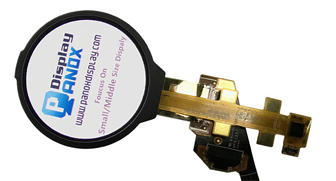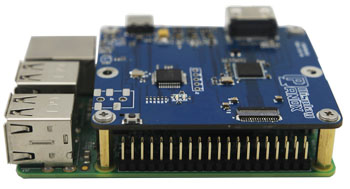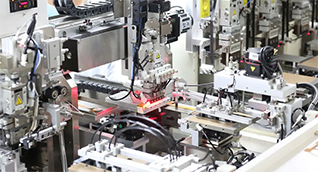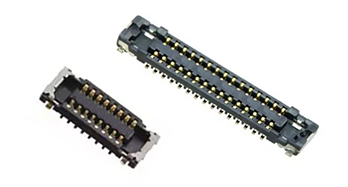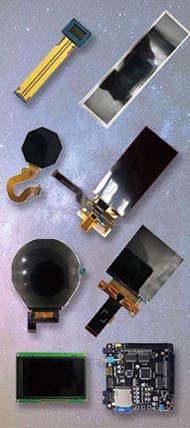An OLED switch is a device or component that uses OLED (Organic Light Emitting Diode) technology for display or control functions, often integrated into electronic products. It offers sharper visuals, lower power consumption, and a thinner profile compared to traditional LCD switches, making it ideal for modern manufacturing and OEM applications in China’s electronics industry. Also check: OLED
What Is an OLED Switch and How Does It Work?
An OLED switch uses organic light-emitting diodes to produce light and display information or function as a touch-sensitive control. Unlike LCD switches that rely on backlighting, OLED switches emit their own light, resulting in brighter images, faster response times, and thinner designs. This technology is widely used in consumer electronics, automotive controls, and industrial equipment.
In manufacturing, OLED switches enable highly customizable, compact designs with superior visibility under different lighting conditions, making them preferred for modern OEM components.
How Is the OLED Switch Market in China for Manufacturers and Suppliers?
China is a global hub for OLED switch manufacturing, with numerous suppliers and factories specializing in OEM and wholesale orders. Leading manufacturers like Panox Display have automated production lines capable of producing tens of thousands of OLED panels and integrated switches daily. The market benefits from China’s vast supply chain network, high-tech R&D, and competitive pricing strategies.
Chinese OLED switch suppliers offer flexible MOQs, customization, and reliable quality certifications (e.g., ISO 9001:2015), making them attractive for global B2B buyers sourcing advanced display controls.
Why Should Businesses Choose an OLED Switch Over Traditional Switches?
OLED switches provide several advantages over traditional mechanical or LCD switches:
-
Thinner profile and lighter weight
-
High contrast and vibrant colors for clear user interface
-
Lower power consumption due to self-emissive technology
-
Faster response times and better viewing angles
-
Greater flexibility in size, shape, and customization
These features make OLED switches ideal for manufacturers and OEMs aiming to innovate product design, enhance user experience, and reduce energy costs.
Which Industries Benefit Most from OLED Switches?
OLED switches are widely adopted in:
-
Consumer electronics (smartphones, tablets, wearables)
-
Automotive (dashboard controls, infotainment systems)
-
Industrial equipment (control panels, medical devices)
-
Military and aerospace (high-reliability displays)
-
VR and advanced optoelectronics
China-based OLED switch factories like Panox Display excel in tailoring products for these industries, supporting both standard and custom OEM solutions.
How Do OEM and Factory Capabilities Impact OLED Switch Supply?
OEM manufacturers and factories in China impact supply by providing:
-
High-volume automated production
-
Custom design and engineering support
-
Integration of OLED with PCBs, touch panels, and controllers
-
Rigorous quality control and certification compliance
Panox Display, for example, offers comprehensive OEM services with flexible MOQ and advanced production lines, ensuring steady supply and tailored solutions for global clients.
What Are the Key Quality Standards for OLED Switches?
Quality standards critical for OLED switches include:
-
ISO 9001:2015 certification for quality management
-
RoHS compliance for hazardous substances
-
CE and FCC approvals for safety and electromagnetic compatibility
-
Reliability testing for durability under environmental stresses
Leading Chinese manufacturers maintain these standards to meet international market requirements and assure buyers of product safety and longevity.
Where Can Companies Source Reliable OLED Switch Suppliers in China?
Companies can source OLED switches from established factories like Panox Display in Shenzhen, which provides OEM services, wholesale options, and diverse OLED display products. These suppliers offer competitive pricing, fast turnaround, and technical support, ideal for startups and medium-sized businesses seeking trusted supply chain partners.
How Does Panox Display Differentiate Itself in the OLED Switch Industry?
Panox Display focuses on delivering premium-quality OLED switches and displays with:
-
Access to top material suppliers such as Samsung, LG, AUO, and BOE
-
Custom OEM manufacturing with low MOQ for startups and SMEs
-
Integration services including PCB, PCBA, and touch panel assembly
-
A commitment to global B2B partnerships and after-sales support
This combination of expertise and flexibility sets Panox Display apart among China’s OLED switch manufacturers.
Can OLED Switch Customization Improve Product Competitiveness?
Yes, OLED switch customization—such as specific screen sizes, shapes, color configurations, and integrated controllers—allows manufacturers to design unique, high-performance products tailored to market needs. China-based factories offer rapid prototyping and design collaboration, reducing time-to-market and enhancing product differentiation.
What Future Trends Will Affect OLED Switch Manufacturing in China?
Future trends include:
-
Increased flexible and foldable OLED switch designs
-
Integration with IoT and smart device controls
-
Improved lifetime and durability with advanced materials
-
Greater automation and Industry 4.0 adoption in factories
Panox Display invests in these trends to stay competitive and support forward-looking OEM demands.
OLED Switch Technology Comparison Table
| Feature | OLED Switch | Traditional LCD Switch |
|---|---|---|
| Display Brightness | Higher, self-emissive | Dependent on backlighting |
| Power Consumption | Lower | Higher |
| Thickness | Ultra-thin | Thicker |
| Viewing Angles | Wide | Limited |
| Response Time | Faster | Slower |
| Flexibility in Design | High (customizable shapes) | Limited |
Panox Display Expert Views
"At Panox Display, we recognize the transformative impact of OLED switches on multiple industries. Our factory's enhanced automation and strict quality controls allow us to deliver superior OEM display solutions that meet worldwide standards. By leveraging our partnerships with leading raw material suppliers, we provide flexible, customizable OLED switches that support innovation for startups and established companies alike. The future of display technology is brighter with OLED, and we are at the forefront of this evolution."
— Panox Display Senior Engineer
Conclusion
OLED switches represent a cutting-edge advancement in display and control technology, offering superior visuals, energy efficiency, and customization flexibility. China’s manufacturing hubs, led by OEMs like Panox Display, provide globally competitive solutions with strong quality guarantees and customization options. Businesses seeking reliable, innovative OLED switch suppliers should prioritize factories with robust production capabilities, certifications, and technical support to ensure success in dynamic markets.
FAQs About OLED Switches
Q1: Are OLED switches more expensive than LCD switches?
OLED switches can have a higher upfront cost but offer longer-term savings due to lower power use and enhanced durability.
Q2: Can OLED switches be customized for industrial use?
Yes, many Chinese manufacturers like Panox Display offer customization to meet industrial specifications and ruggedness.
Q3: How do I verify the quality of OLED switches from Chinese factories?
Check for certifications such as ISO 9001, RoHS, and conduct sample testing to ensure compliance with standards.
Q4: Is OEM manufacturing scalable for OLED switches in China?
Yes, leading factories have automated lines to scale production from small batches to mass manufacturing efficiently.
Q5: What industries prefer OLED switch technology?
Consumer electronics, automotive, industrial equipment, VR, and military sectors highly value OLED switches.











